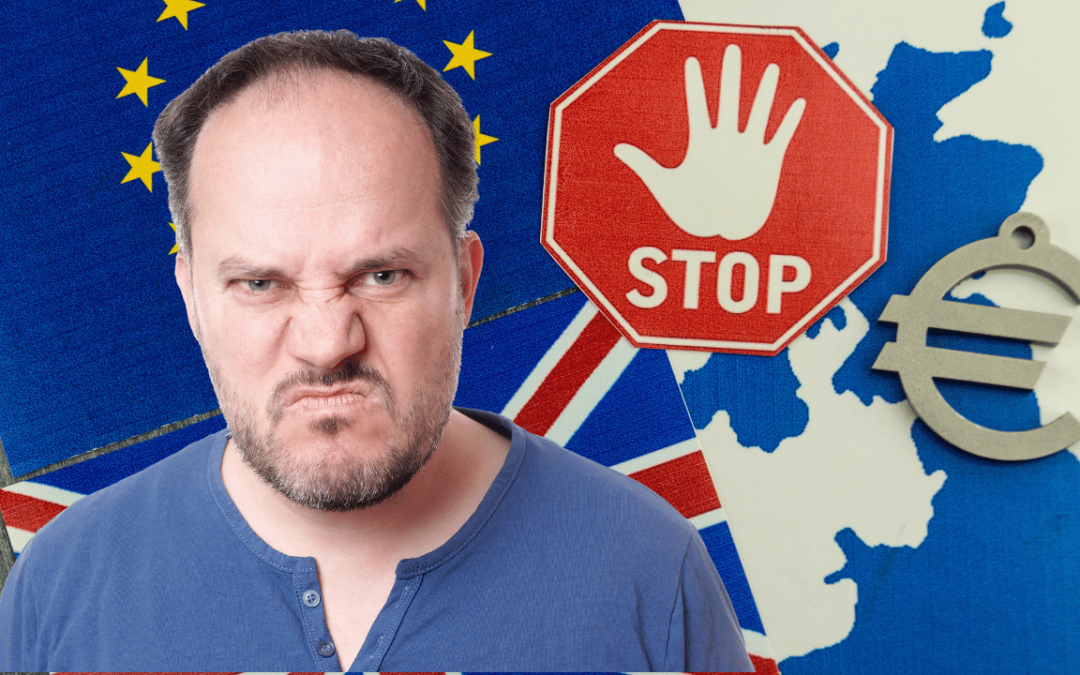Here’s how to register as a resident in Spain if you’re a citizen of an EU country. Find out what documents you need for your residence permit and how to apply whether you’re working, self-employed or living on savings. All information is from official government websites.
Prefer to watch the video? Click on the pic!
So you’re a citizen of an EU country like me and you want to live in Spain.
Here’s the official information you need provided by specialists, including comprehensive links to government websites so you can know the facts about how to register as a resident of this wonderful country. That’s what we do at YouTooSpain. Let’s dance!
Today’s blog then is about the relatively easy process of registering your intention to live in Spain if you’re a citizen of an EU country.
Why is it easy?
Well, because you’re an EU citizen you have the right to live and work in Spain. And that means you don’t need to apply for a visa to live here. I use the phrase

an awful lot in these blogs because, especially when it comes to getting visas, every individual case can bring up differences in the process and the documentation needed. But for EU citizens, there are fewer differences to deal with.
So let’s run through what you need to do and I’ll cover some of the most common ‘issues’.
Should you get professional help?
Personally, I’d advise you get expert help from a recommended professional if your case is complicated, or if you don’t speak any Spanish at all. But it’s totally up to you. If you’re feeling brave and confident after reading this article, give it a go.
What’s the first part of the process?
First thing to do is book an appointment with the foreigners’ office at a national police station.
How do you do that?
HERE is a link to the Immigration Offices – Just pick the autonomous region you’ve moved to first, then on the next screen pick the city that covers your province.
Does every office have the same process?
Different cities seem to have different ways of making appointments, some you can use their online system, for others it’s an email or telephone call, and some it just tells you the opening hours which suggests you can just turn up and queue. This is where you’ll probably need some Spanish to get by. My advice is to ask them first to find out what to do if you’ve not got an experienced advisor at hand.

So, what documents must you take to your appointment?
Number 1 – A Padrón certificate
In Spanish, that’s ‘Certificado de empadronamiento’. This is the equivalent of being on the electoral register or census in other countries, and is the official proof of your residential address. I’ve made a video all about how to get one of these from your local town hall, HERE is the link. And HERE is another link to find your local town hall (in Spanish, ‘ayuntamiento’.)
Number 2 – Your passport
This must of course be valid. Also take a photocopy of the biometric pages with you.
Number 3 – Application Form
A filled in copy of the application form, which is called the modelo EX-18. HERE is a link to download the form. Also make sure you take a copy of this with you.
Number 4 – Proof of payment of the fee
The form for this is the modelo 790-012. Click HERE for the link. There are several ways to pay it in advance, Click HERE to pay through the tax office.
Number 5 – ??
This is where ‘it depends’ comes into play. If you’re going to be employed and you’ve already arranged a work contract, you should bring your contract of employment or other proof of employment status, like registration in the register of economic activities or with the relevant social security scheme.
What about if you’re self-employed?
Same goes for self-employed people. This proof will also show that you have state healthcare cover.
Catch 22!
Now, this raises an interesting Catch-22 situation. To register on the social security system, you first need an NIE (Foreigners’ identification number), which is normally allocated at your residency appointment. But you need healthcare cover as part of the registration process, so you need to have registered with Social Security first in order to get this. But you need your NIE for this. And now you’re stuck in a loop.
So what do I do?
In that case, and this is what happened to me, you first have to go and get your NIE without registering for residency, and be prepared to cut through any confusion this might cause with the official asking why you’re doing it in this order. This is the sort of situation that has the potential of sending you running backwards and forwards to different offices and causing you to scream blue murder about Spain’s ridiculous bureaucracy. My advice, get yourself someone like Chris from Upsticks to be there with you.
Number 6 – Healthcare cover
If you’re not going to be working, you’ll need to show proof of state or private health cover for you and your family members. Your health insurance provider should give you a certificate of cover in Spanish. Click HERE to get a quotation from our trusted partner.
Number 7 – Students
Another ‘it depends’ – if you’re a student, you must show proof of enrolment at a private or public establishment, accredited or financed by the competent education authority. And you also need proof of healthcare cover.
If you have any questions, put them in the comments below, or under the video on YouTube so that the answers can help everyone else too.
One final thing, if you’re moving from a non-Euro country, you’ll need the best broker to help you get the most bang for your bucks. Click HERE to register with our trusted broker.

Peace & Love. Let’s Dance! (All of YouTooSpain’s catchphrases are available on our merchandise, click HERE)
Article by Skatz











0 Comments